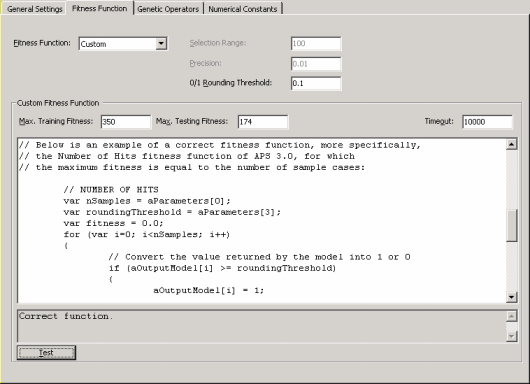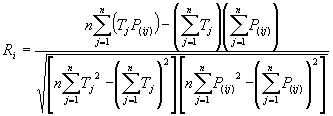For all classification problems, in order to be able to apply a particular fitness function, the
learning algorithms APS 3.0 must convert the value returned by the evolved model into “1” or “0” using the
0/1 Rounding Threshold. If the value returned by the evolved model is equal to or greater than the rounding threshold, then the record is classified as “1”, “0” otherwise.
Thus, the 0/1 Rounding Threshold is an integral part of all fitness functions used for classification and must be appropriately set in the Settings Panel -> Fitness Function Tab.

The R-square fitness function is, as expected, based on the standard
R-square, which returns the square of the Pearson product moment correlation coefficient.
The Pearson product moment correlation coefficient is a dimensionless index that ranges from -1 to 1 and reflects the extent of a linear relationship between two data sets.
The Pearson product moment correlation coefficient Ri of an individual program i is evaluated by the equation:

where P(ij) is the value predicted by the individual program
i for fitness case j (out of n fitness cases);
and Tj is the target value for fitness case j.
The fitness fi of an individual program
i is expressed by the equation:
fi = 1000*Ri*Ri
which allows a fairer distribution of fitnesses for selection.
|